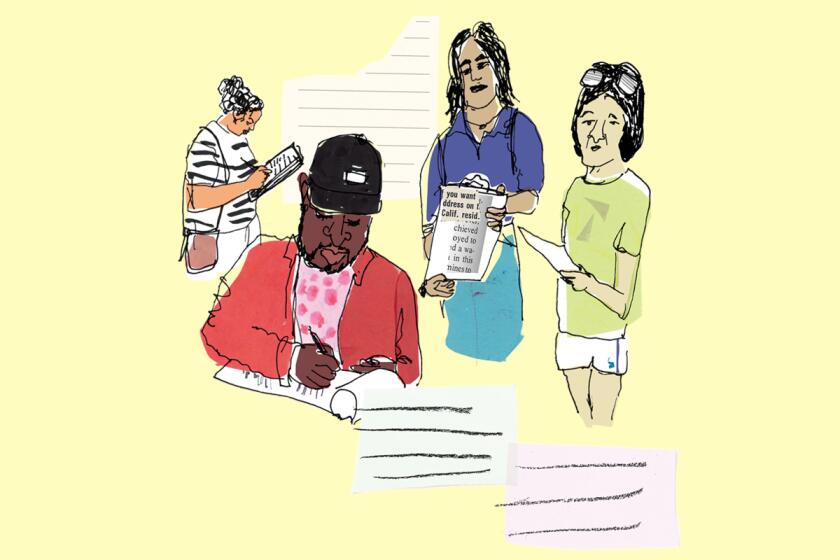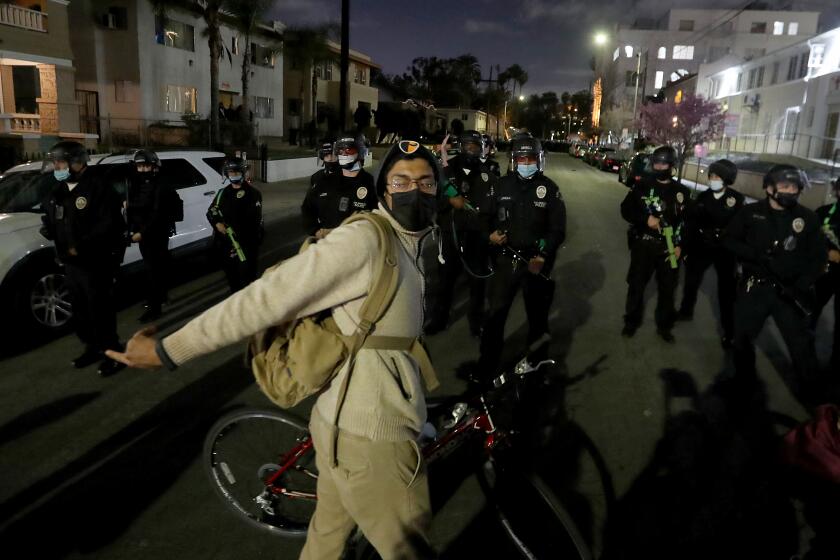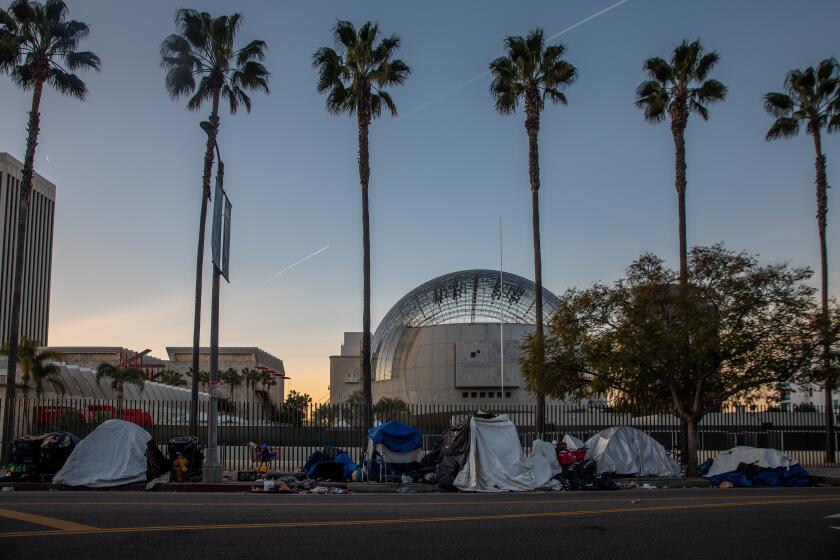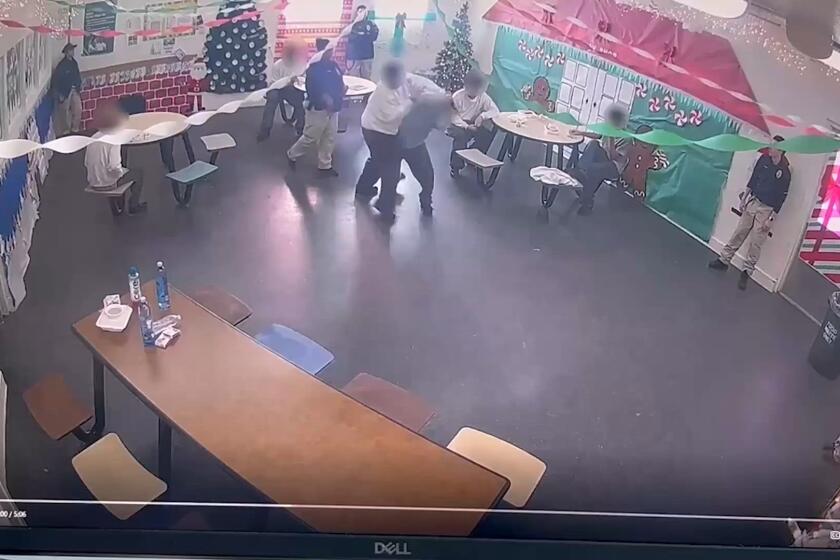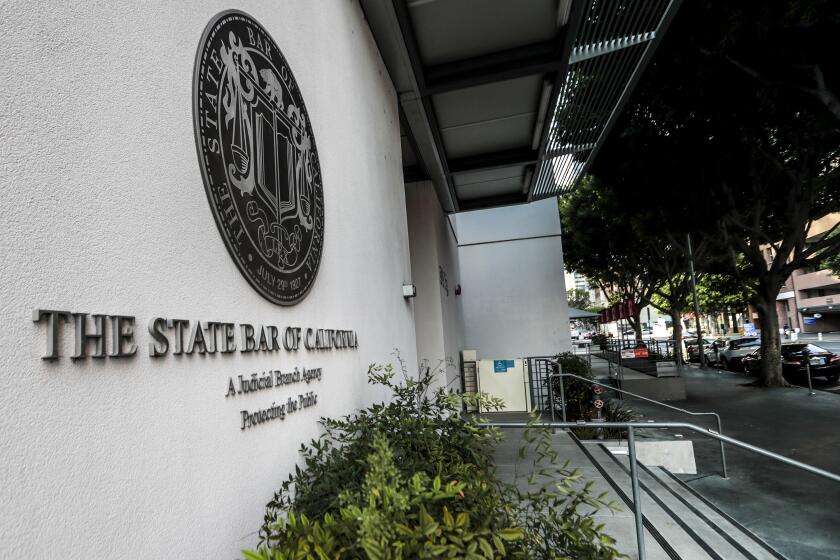The fence around Echo Park Lake is coming down. The debate over it rages on
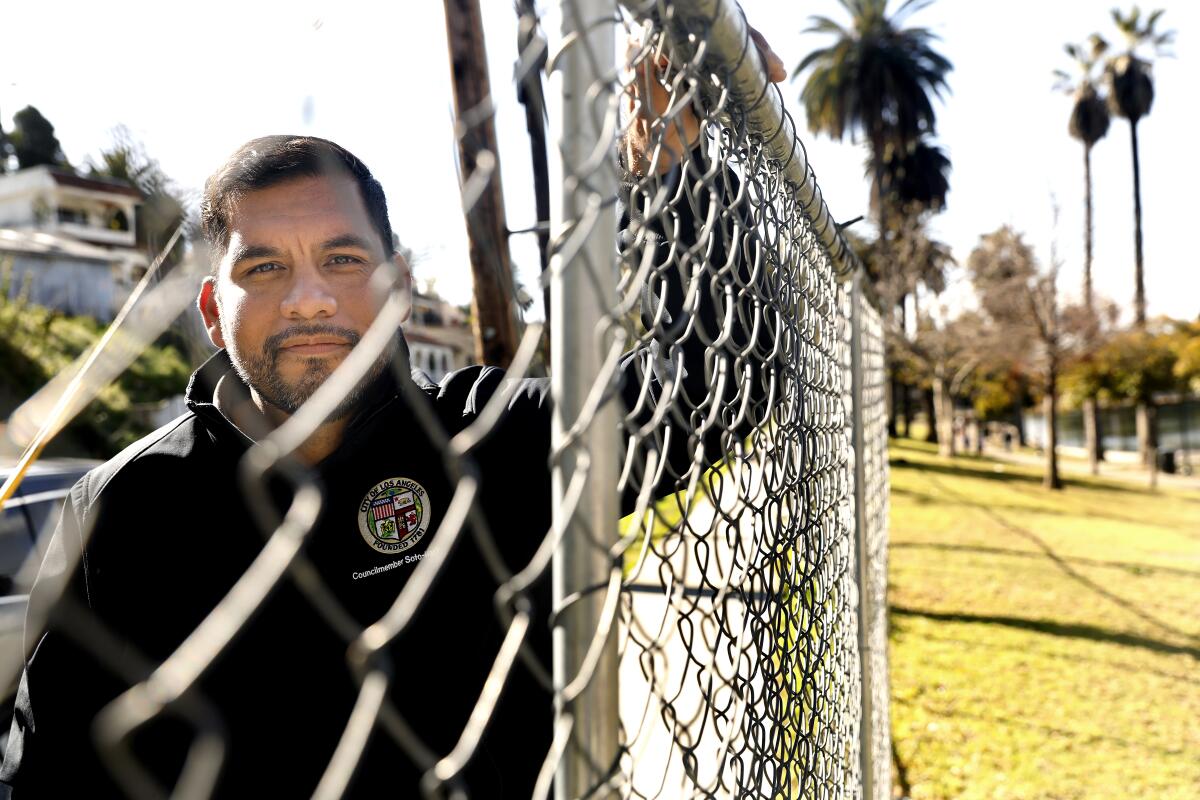
- Share via
Two years ago, construction crews worked deep into the night around the perimeter of Echo Park Lake, putting up segment after segment of chain-link fence as protesters faced off against police officers not far away.
At the time, that fence was described as a temporary barrier, one that would allow the city to clear out a massive homeless encampment, then start the work of cleaning, repairing and restoring the park.
Now, Councilmember Hugo Soto-Martinez is preparing to take that fence down, just as the city reaches the second anniversary of the controversial encampment operation. But the neighborhood remains at least partly divided over the fence — and the future of the park, one of the city’s most scenic locales.
Soto-Martinez, who promised to remove the fence during last year’s election campaign, has described it as a symbol of the city’s “largest policy failure on homelessness.” But he’s facing criticism from some in the neighborhood, who say the fence was essential to restoring order within the park, allowing families and seniors to return.
Gil Mangaoang, a retired social worker, said he and his neighbors had a front-row view of the chaos that regularly erupted inside the park between 2019 and 2021, including shootings, fires and physical fights. Residents near the park, Mangaoang said, had their sleep repeatedly interrupted by late-night partying, amplified music and screaming from the encampment.
Four people died in the park, including an 18-year-old from San Diego County who overdosed on drugs.
You can help someone get on the path to housing — and make your voice heard on issues of housing and homelessness. Learn how with Shape Your L.A.
“Councilmember Soto-Martinez’s campaign promise was to remove the fence. But you know what? The campaign is over,” said Mangaoang, who lives in an apartment across from the lake. “Now he has to govern and represent all of his constituents.”
Mangaoang, 76, and several other longtime parkgoers have called on Soto-Martinez to install a permanent fence, similar to those found at Los Angeles State Historic Park in Chinatown and Leimert Park in South L.A. They have described some of the incidents that took place when the encampment was at its peak.
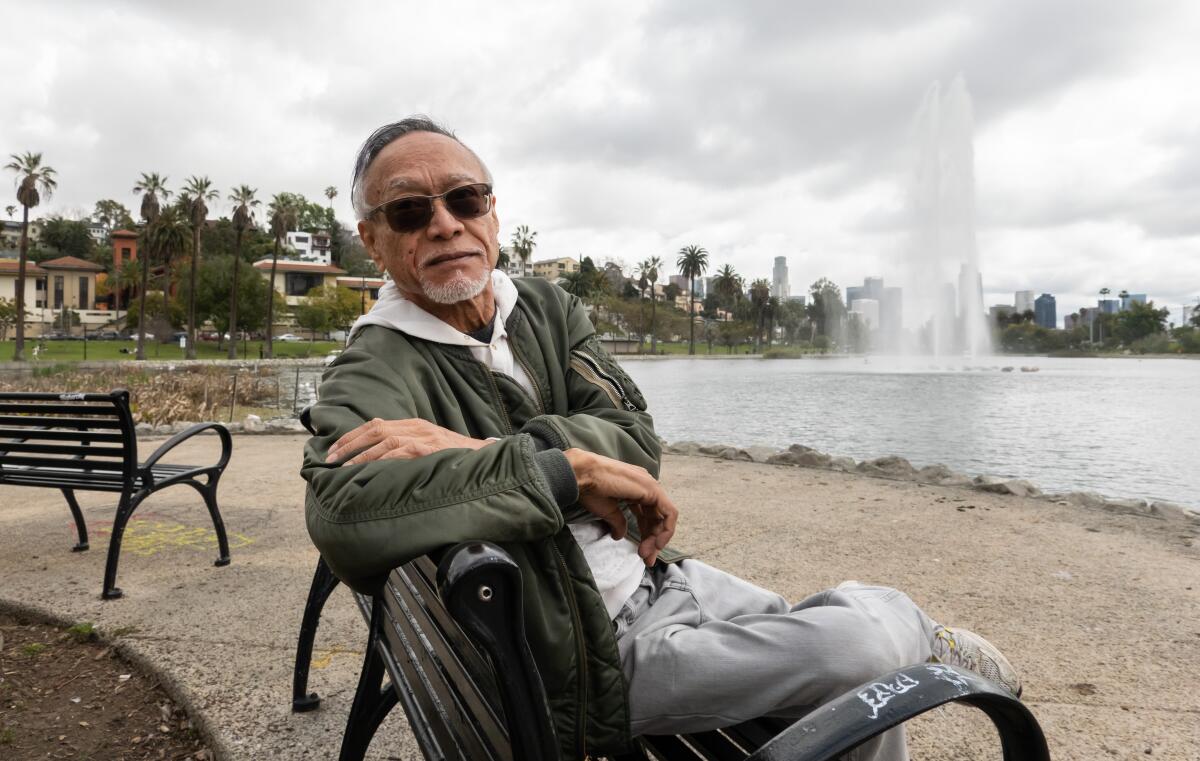
At one point, Mangaoang said, he saw a man outside a tent throw punches at another man. “He was trying to hit the guy in the stomach, and the other guy tried to kick him in the crotch,” he said. “I did a U-turn and walked out of the park.”
Nancy Ochoa, 34, said she hustled her two children out of the park two years ago after seeing a man screaming and waving a gun. Andrea Martinez Gonzalez, 73, said she saw a physical fight between two women, one of them partially clothed.
“I stopped walking in the park because of the encampment,” she said. “And it was wonderful to get it back.”
Soto-Martinez has sought to address those fears, promising to send homeless outreach workers into the park seven days a week, while having a team of unarmed responders available at night. Last week, he and Mayor Karen Bass’ Inside Safe program moved 64 unhoused people, many of them from streets near the lake, into temporary housing.
Forty-five went into the Hotel Silver Lake, nearly two miles away, while 14 others went to the downtown L.A. Grand Hotel, according to a Bass aide. Five are in a motel that has not been named, the aide said.

Soto-Martinez highlighted that work at two recent town hall meetings, both devoted to the fence’s removal. He has placed blame for the park’s prior public safety woes on his predecessor, former Councilmember Mitch O’Farrell, who lost to Soto-Martinez last year.
“The former council member let the park fall into this position,” Soto-Martinez told one group. “The council member is the boss, the one in charge. He let it happen. I won’t let it happen.”
O’Farrell had no comment when reached by The Times. Last year, while running for reelection, he said the park had become a “dangerous, deadly environment” for encampment residents, requiring a huge relocation effort.
Homeless advocacy groups have long pushed back against that narrative. In 2021, those groups issued a statement calling the encampment a “beautiful and much lauded homeless-run outdoor community,” one that offered security, stability and “healing for drug addiction and mental illness.” Since then, they’ve asserted that violence in the area was committed by police, who fired projectiles and injured demonstrators opposed to the encampment operation.
L.A. has poured resources into Echo Park Lake in recent decades, carrying out a $45-million renovation of the park that added 4 acres of wetlands and other improvements. The park was fixed up again in the wake of the encampment operation in 2021, with repairs estimated at $600,000. Since its reopening, the fenced-off park has offered about six different areas where visitors can enter each day.
Echo Park protesters and others allege police used excessive force, raising new questions about crowd control tactics.
Soto-Martinez has repeatedly declined to give an exact date for the fence’s removal, saying it will come down when there are sufficient resources available to the park. He said residents of the district, which stretches from Echo Park to Hollywood, cast their vote to remove the fence in November, when they ousted O’Farrell.
“The community made a decision when they elected me,” Soto-Martinez said. “I was very clear about that being a campaign promise.”
Santos Davila, a 43-year-old street vendor, offered a different take. Davila, who lives in Echo Park, said he’s seen less trash and criminal activity since the fence went up. He recently took his 8-year-old daughter, Sonia, on a bike ride through the park — an activity that “would have been impossible two years ago,” he said.
“I voted for Hugo,” said Davila, appearing at one of the town hall meetings. “I feel like he’s one of us, and he knows this area. And I can’t believe after seeing all this change the last couple of years, he’s thinking about getting rid of the fence.”
Soto-Martinez is still working to win people over. He has recruited volunteers, including some from Democratic Socialists of America’s L.A. chapter, to tell residents about the work being done in the park. Those volunteers found that 50% support the fence’s removal, 18% oppose it and the remainder are either undecided or don’t care, a Soto-Martinez aide said.
Marissa Ayala, who has been knocking on doors for Soto-Martinez, said the fence has done nothing to address homelessness, mental health or substance abuse issues in L.A. Supporters of the fence, she said, are “a small but very vocal contingent” of residents.
“The fence does a lot more harm, and really has no positives,” said the Mid-City resident, who belongs to DSA-LA’s electoral politics committee.
Some Echo Park residents haven’t needed convincing.
Bruce Embry, who has lived in the neighborhood since 1958, pointed out that Echo Park Lake did not have a fence for the vast majority of its existence.
“This has been an open park for most of its life,” he said. “It needs to return to that.”
Soto-Martinez’s plan also has support from Valerie Zeller, one of the last of the unhoused people to leave Echo Park Lake when it was cleared in 2021.
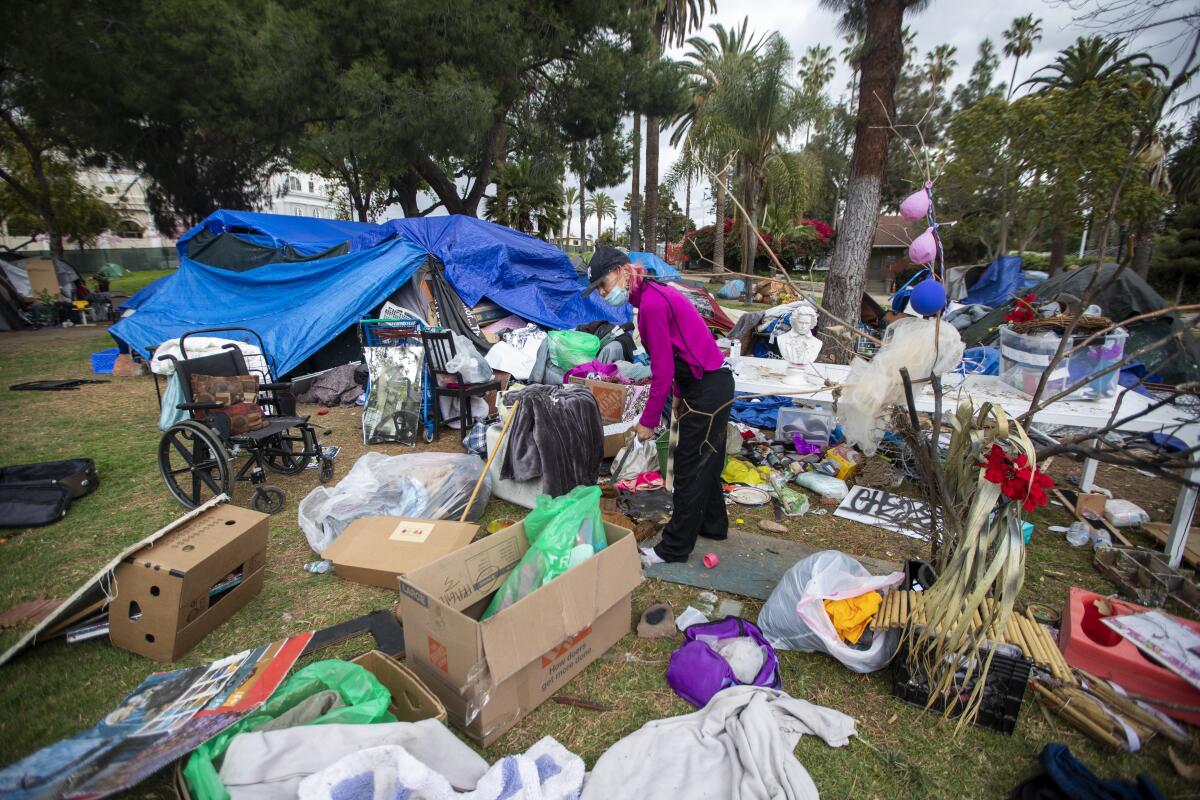
Zeller recently agreed to move into one of the city’s tiny home villages, a facility opened by O’Farrell. Standing outside a van just north of the lake, she said the fence’s removal is long overdue.
“It’s a park. You shouldn’t feel like you’re in jail,” she said. “When they fence in parks, it feels like they’re excluding people, or don’t trust people not to follow rules.”
Whether the park’s rules will be enforced, or even needed, is unclear. The city’s laws prohibit people from putting up tents in parks, regardless of the time of day. City park rangers enforced that law in the past.
Critics complain that some of the homeless people served by the mayor’s Inside Safe program have been shuffled from hotel to hotel.
Enforcement was largely suspended in Echo Park following the outbreak of COVID-19. At the time, the Centers for Disease Control and Prevention warned that dispersing homeless encampments could increase the spread of COVID-19.
In February 2021, as vaccines were being distributed, O’Farrell and then-Mayor Eric Garcetti moved ahead with the encampment operation, sending outreach workers to persuade people to move into hotels, motels and homeless shelters.
At one point, Garcetti’s office reported that nearly 200 people had accepted interim housing, with about two-thirds agreeing to move into the L.A. Grand and the Mayfair hotels. Those efforts were overshadowed by late-night clashes between protesters and police, who arrested about 180 people, including journalists.
A year later, UCLA’s Luskin Institute on Inequality and Democracy concluded that only a tiny fraction of those moved from the lake received long-term housing. Soto-Martinez has denounced the fence since then, calling it a “stain on the city’s history.”
Meanwhile, some in the neighborhood are ambivalent about what’s next.
Jackelyn Valladares, who lives near the site, said she’s “not a fan” of the fence. But she’s relieved that her mother feels safe to walk in the park again.
“Echo Park’s been a haven, especially for folks who live in apartments,” she said.
More to Read
Sign up for Essential California
The most important California stories and recommendations in your inbox every morning.
You may occasionally receive promotional content from the Los Angeles Times.
